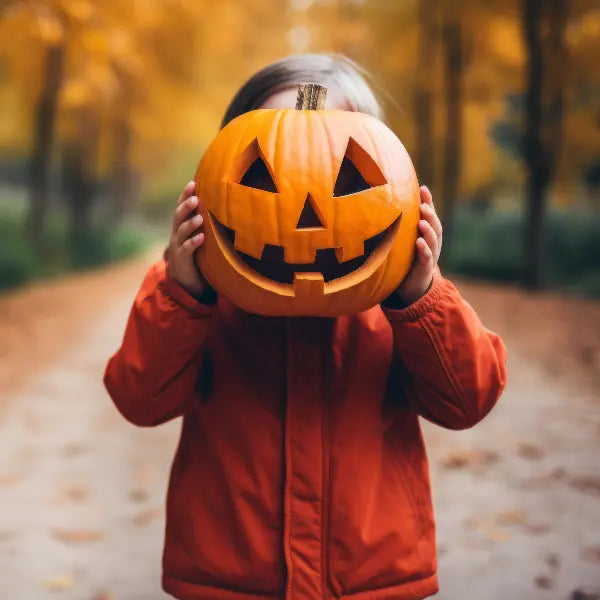It's that time of year again when the veil between the living and the dead grows thin, and the world is awash in a sea of pumpkins, costumes, and candy. Yes, my friends, it's Halloween - a holiday that has captured the imagination of people across the globe, each with their own unique spin on this spooky celebration.
The Origins of Halloween
The origins of Halloween can be traced back to the ancient Celtic festival of Samhain, celebrated in what is now modern-day Ireland, the United Kingdom, and parts of France. The Celts believed that on the night of October 31st, the boundary between the world of the living and the world of the dead became blurred, allowing spirits and supernatural beings to walk the earth.
To ward off these unwelcome visitors, the Celts would don costumes, typically made of animal skins and heads, and light bonfires to guide the spirits on their way. They also left offerings of food and drink to appease the supernatural entities. This tradition of dressing up and leaving treats for the dead is the foundation for the modern-day practice of trick-or-treating.
Halloween Around the World
While the roots of Halloween can be found in Celtic traditions, the holiday has evolved and taken on unique forms in different cultures around the world. Let's take a spooky journey and explore some of the most fascinating Halloween customs from across the globe.
Mexico: Día de los Muertos
In Mexico, the celebration of Halloween takes on a much more vibrant and joyous tone with the observance of Día de los Muertos, or the Day of the Dead. This two-day festival, which takes place on November 1st and 2nd, is a time to honor and remember the lives of deceased loved ones.
Families gather in cemeteries, decorate the graves of their ancestors with marigold flowers, and leave offerings of the deceased's favorite foods, drinks, and personal items. The belief is that the souls of the dead return to earth during this time and are welcomed by their families with open arms.
One of the most iconic symbols of Día de los Muertos is the calavera, or sugar skull, which is often used to decorate altars and as a motif in various forms of art and fashion.
Japan: Obon Festival
In Japan, the celebration of Halloween takes on a more spiritual and ancestral form with the Obon festival. Held annually in mid-August, Obon is a time when the spirits of one's ancestors are believed to return to the mortal world.
Families gather to honor their deceased loved ones, visiting gravesites, cleaning and decorating them, and offering prayers and food. One of the most striking traditions is the lighting of floating lanterns, called tōrō nagashi, which are sent down rivers and out to sea to guide the spirits back to the afterlife.
The Obon festival is also marked by lively dances, called bon odori, which are performed to welcome the spirits and celebrate the connection between the living and the dead.
Ireland: Samhain and the Jack-o'-Lantern
As the birthplace of the ancient Celtic festival of Samhain, Ireland has a rich and storied history when it comes to Halloween traditions. The practice of carving turnips and placing lights inside them, known as the "jack-o'-lantern," originated in Ireland as a way to ward off the spirit of Stingy Jack, a mischievous character who was said to have tricked the devil.
Today, pumpkins have replaced turnips as the preferred canvas for these carved creations, but the tradition lives on. Irish children also engage in the time-honored practice of going door-to-door, dressed in costumes, and asking for treats, much like the modern-day trick-or-treating.
Scotland: Guising and Dooking for Apples
In Scotland, the Halloween tradition of "guising" has been a part of the cultural fabric for centuries. Guising involves children dressing up in costumes and going from house to house, performing a song, poem, or trick in exchange for a treat.
Another uniquely Scottish Halloween custom is "dooking for apples," which involves bobbing for apples in a tub of water. The person who manages to catch an apple with their teeth is said to be the next to marry.
Germany: Witches' Night and Pumpkin Carving
In Germany, Halloween is celebrated with a twist, as the holiday is closely associated with the legend of the Walpurgis Night, or Hexennacht (Witches' Night). On the eve of May 1st, it is believed that witches gather on the Brocken, the highest peak of the Harz Mountains, to celebrate and dance with the devil.
While Walpurgis Night is the more prominent celebration, Germans have also embraced the pumpkin-carving tradition, with many cities and towns hosting pumpkin festivals and competitions.
A Spooktacular Conclusion
From the ancient Celtic roots of Samhain to the vibrant celebrations of Día de los Muertos in Mexico and the spiritual observances of Obon in Japan, the history of Halloween is a rich tapestry of cultural traditions and beliefs. As we don our costumes and indulge in the sweet treats of the season, let us remember the ghoulish origins and the diverse ways in which this holiday is celebrated around the world.
So, grab your broomstick, light your jack-o'-lantern, and let's embark on a spooktacular journey through the haunting history of Halloween!




